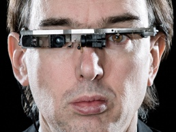Health Integrity by Way of Patient Ownership of Health Data Through “Wearables”
By Steve Mann
Compared with older times, records that were ordinarily kept by individuals and their extended families have now become centralized by healthcare providers, police, and other institutions. This often-centralized monitoring of individuals by doctors, hospitals, and other institutions could be called “surveillance”. Surveillance has been the default power relationship of modern medicine where institutions have been the data collectors, curators, and gatekeepers. Patients have been the observed subjects (“the surveilled”). They were sometimes even subjects of privacy-violating experiments run on their personal data without their knowledge or consent [1].
[Rosenbaum, Ron. “The great Ivy League nude posture photo scandal.” New York Times 15 (1995): 28.]
The evolution of privacy protection in healthcare during the 1980s and 1990s did more to further institutionalize and bureaucratize personal data than to really give it or its control back to patients. Many of us were unable to get copies of, or to even see our own medical images like X-rays, in part, due to the increased bureaucracy brought about by these more stringent “privacy” safeguards. This increased “security” often served merely to “lock down” data and further centralize its storage, thus giving even greater control of our personal data to doctors and institutions and “expert guardians”, creating an even more asymmetrical power relationship between patients and institutions. This allowed the powerful to sometimes even benefit from our data (e.g. to do “data mining” or sell it) while keeping us from accessing it freely. Data should really be the property of its subjects (patients), and that is why I introduced the concept of Subjectrights and Quantigraphic Self-Sensing (QSS) at MIT in the early 1990s [2]
[Mann, Steve. “Subjectright”, The Journal of Medical Knowledge Management, Volume 6, Number 2, p8-9, Apr. 2001].

Fig. 1 QSS (Quantigraphic Self-Sensing), now known as QS (Quantified Self) was introduced by S. Mann in the 1990s and presented to Kevin Kelly at WiReD Magazine in San Francisco in 1996 as an early prototype. Ten years ago(2009), Mann and others founded InteraXon, makers of the Muse and Muse2 brain-sensing headband that senses EEG, blood flow, head movement, etc..
Right now, wearables are the “wild west” of healthcare innovation. There is a socio-political battlefield between the interests of the vulnerable (the patients) and the interests of the powerful (governments, health and insurance providers, and the multi-billion-dollar marketplace).
But, I believe that we can cause a transition from the hypocrisy of treating personal data in a surveillant manner, toward creating systems that ensure the integrity of health data by putting its ownership into the hands of patients themselves, through Subjectrights and wearables.
Wearables (including smartphones, watches, “smart clothes’’, eyeglasses, etc.) have the potential to mitigate or even reverse these often-detrimental one-sided power structures. Patients now have the possibility of gathering their own data in real-time and maintaining more information about their own physical condition and behavior than going to annual visits to a doctor, hospital, or having lab tests done. Fortunately, this “wearables” trend is being combined with efforts by governments and healthcare providers to promote patient-centered care where patients can be participants in their own care and can even help invent the future of healthcare. This is called “sousveillance” (the reverse of surveillance).
Thankfully, this “sousveillance” can turn traditional healthcare inside-out, starting with a “data to the people” as its default. This can help foster integrity, human dignity, human rights, and true privacy (in contrast to institutionalized pseudo-privacy). Most importantly, wearables and sousveillance can provide us with agency over our own bodies through self-determination.
As a simple example, we’re constantly recorded by surveillance cameras all around us while we’ve been sometimes prohibited from recording ourselves. But now, we can record our own brainwaves and actually make our biological eyes function as cameras. We call this “eye-is-a-camera” sensing the EVG (ElectroVisuoGram). The EVG is just one of many new and exciting technologies for health sousveillance from which we can search through correlated EVG and ECG (electrocardiogram) recordings to answer questions like “What is happening around me that is causing me stress, and how are various events and stimulus affecting my health and well-being?”. The EVG is a visual memory prosthetic that helps us remember exactly what we were doing when our heartbeat went irregular. This will put an end to the hypocrisy of surveillance and its one-sided “we can watch you, but you can’t watch us” gaze. Surveillance is the veillance of hypocrisy and what we need us sousveillance which is the veillance of integrity.

Fig. 2 High resolution version of Figures can be downloaded here:
World’s first Quantigraphic Self-Sensing (Quantified Self) system:
http://wearcam.org/QSSteveMann1996.svg
http://wearcam.org/QSSteveMann1996.pdf
EVG (ElectoVisuoGram):
http://wearcam.org/luke_minds_eyecam.svg
http://wearcam.org/luke_minds_eyecam.pdf
[S Mann, D Lam, KE Mathewson, J Stairs, C Pierce, J Hernandez, G Kanaan, L Piette, H Khokhar, and C Mann, “The Human Eye as a Camera”, IEEE Healthcom 2019, Bogotá, Colombia]
How these technologies will be integrated into our bodies and our socio-political and economic lives will have significant implications for their invention, design, deployment, regulation, and effects on individual integrity.
Acknowledgements:
Dr. David Naylor and Dr. Joseph Ferenbok provided a great deal of useful help and discussion in this work.
 Steve Mann
Steve Mann
Centre for Humanistic Intelligence,
University of Toronto, Canada
mann@eyetap.org






